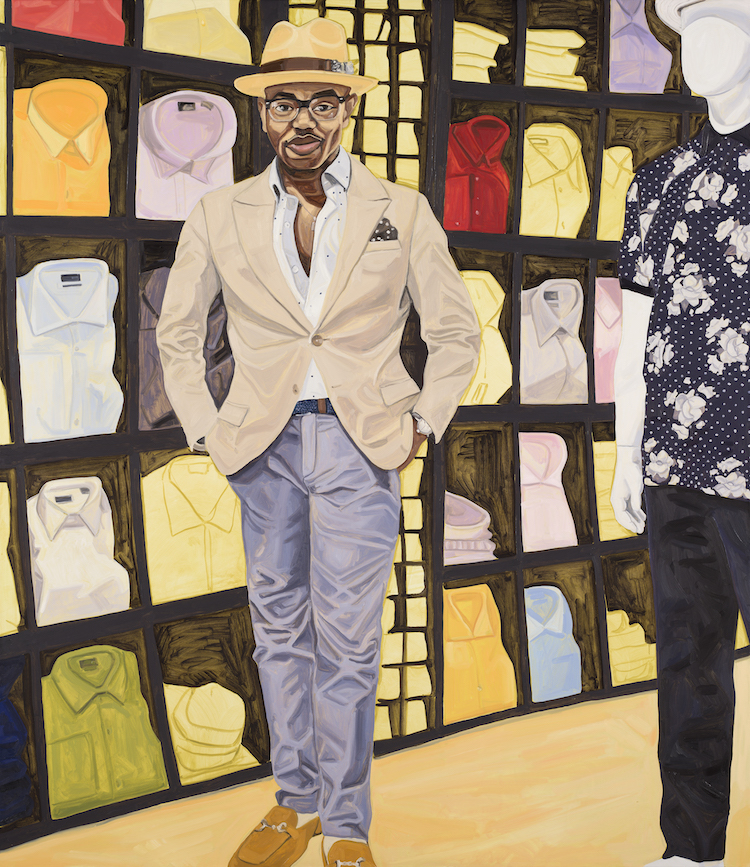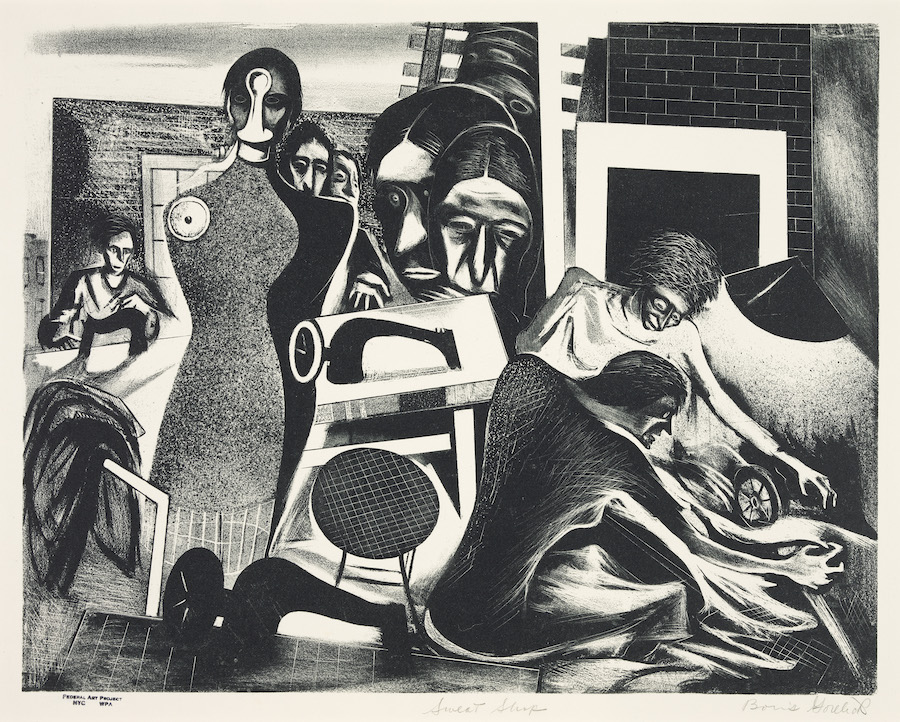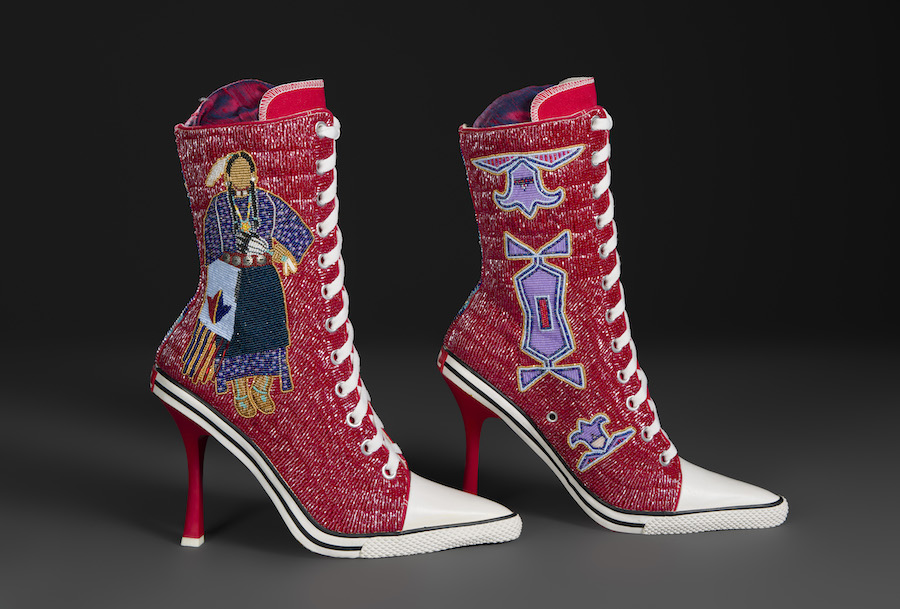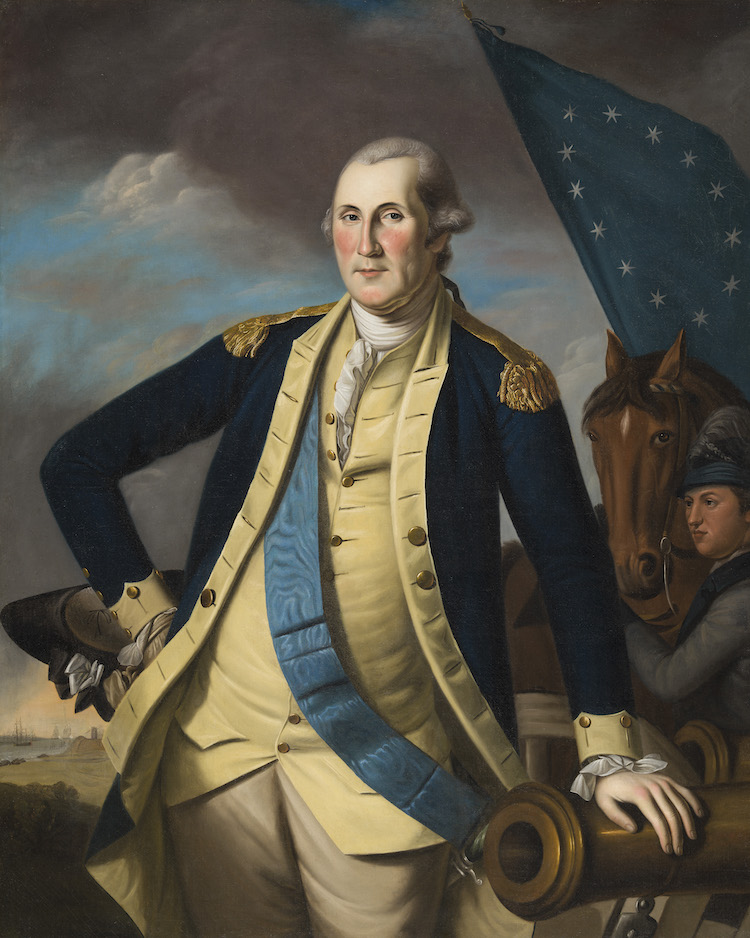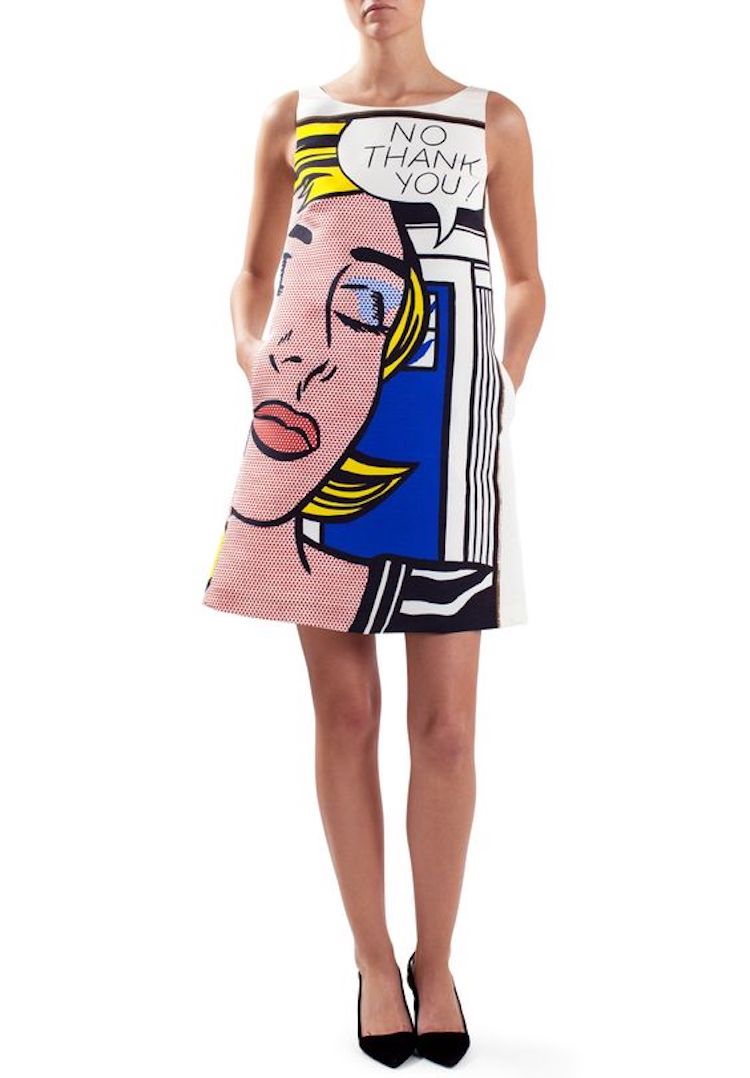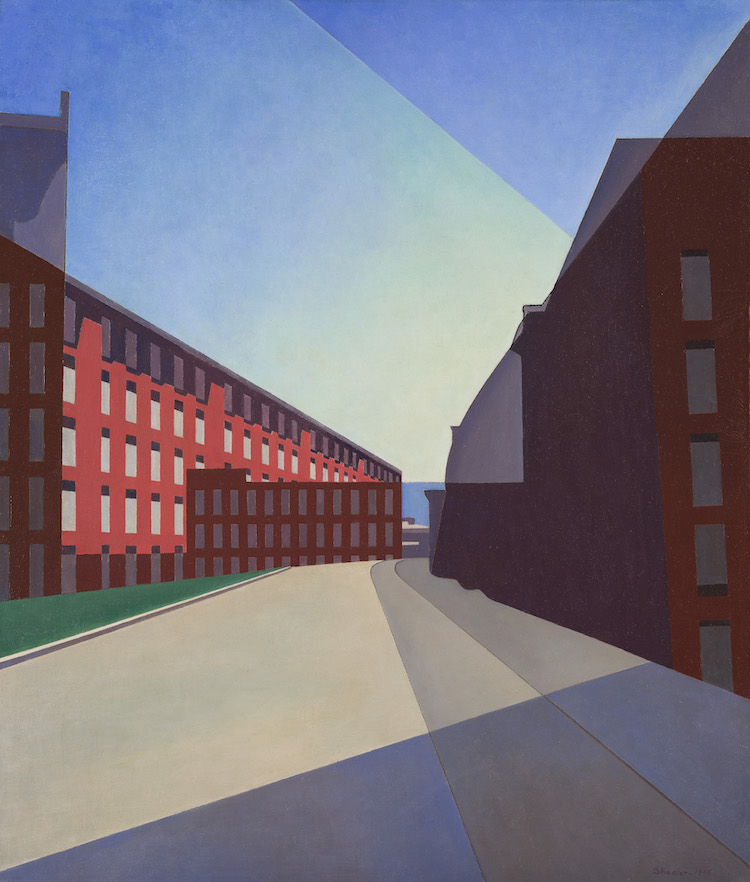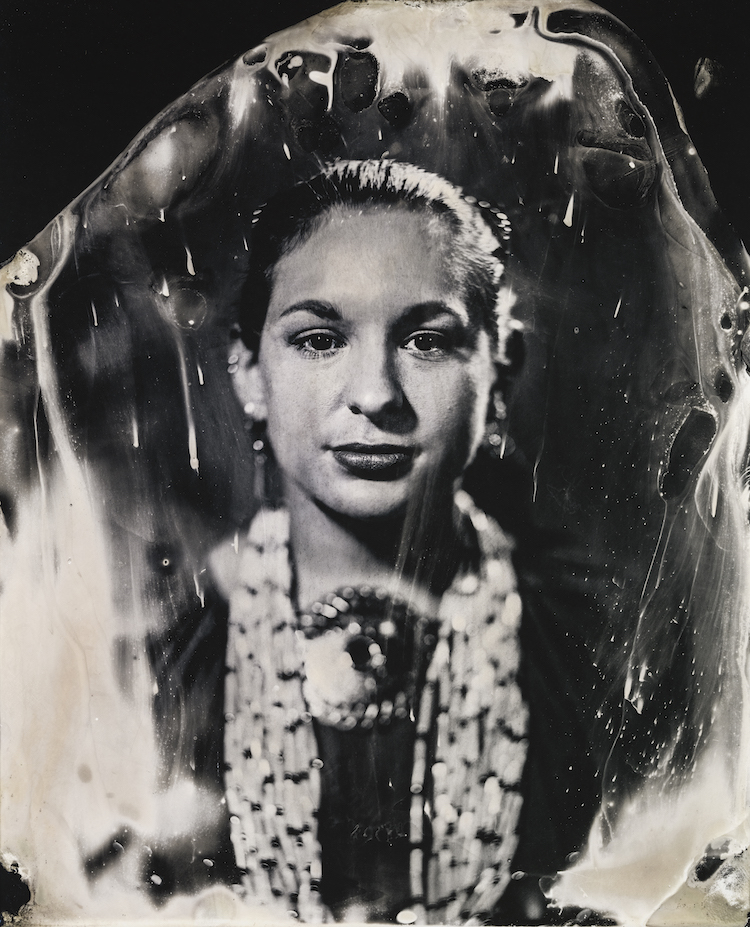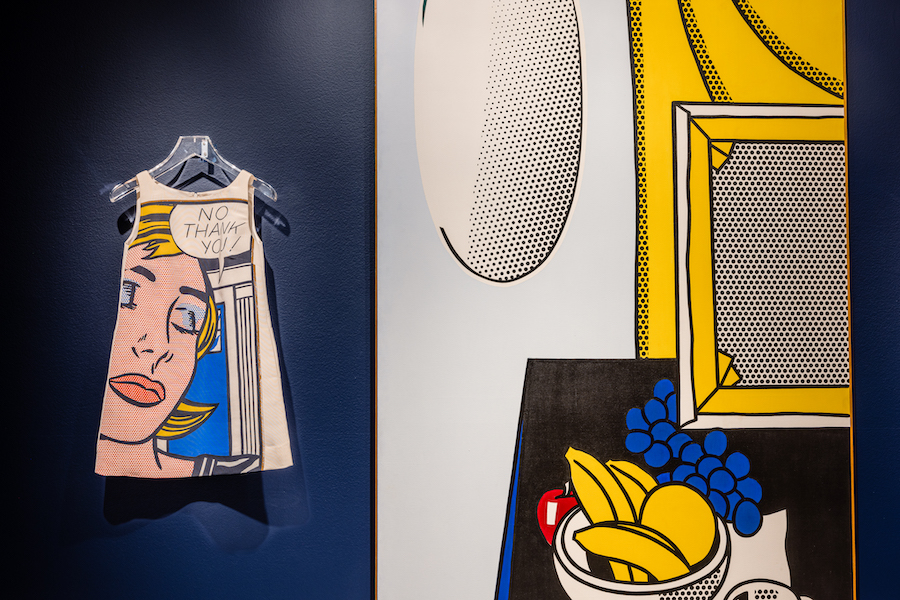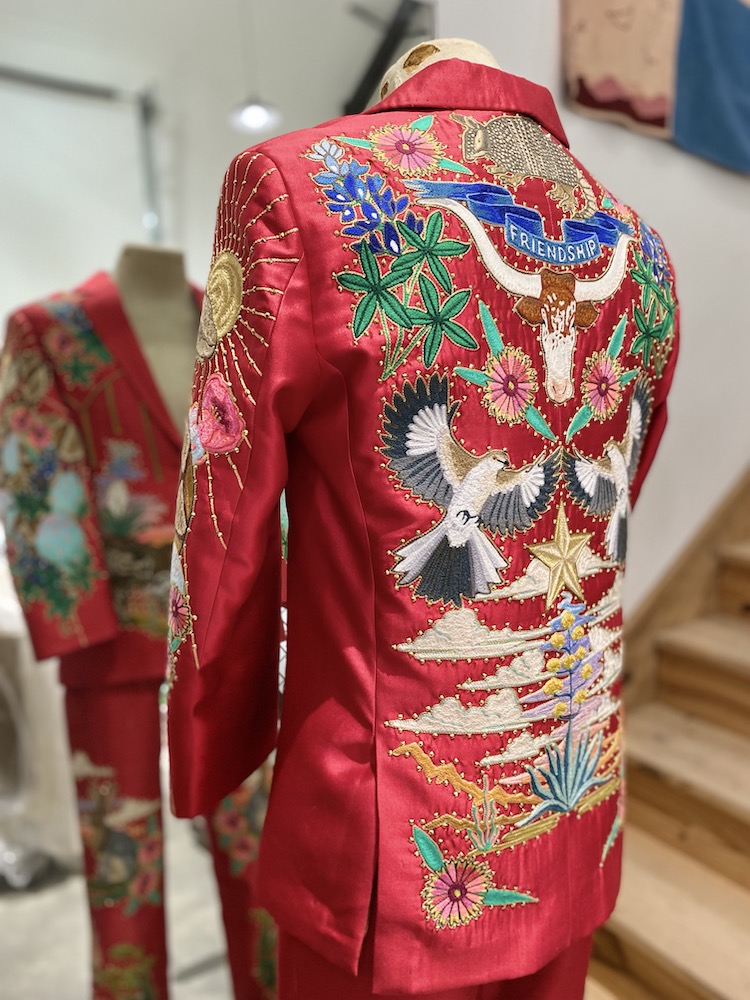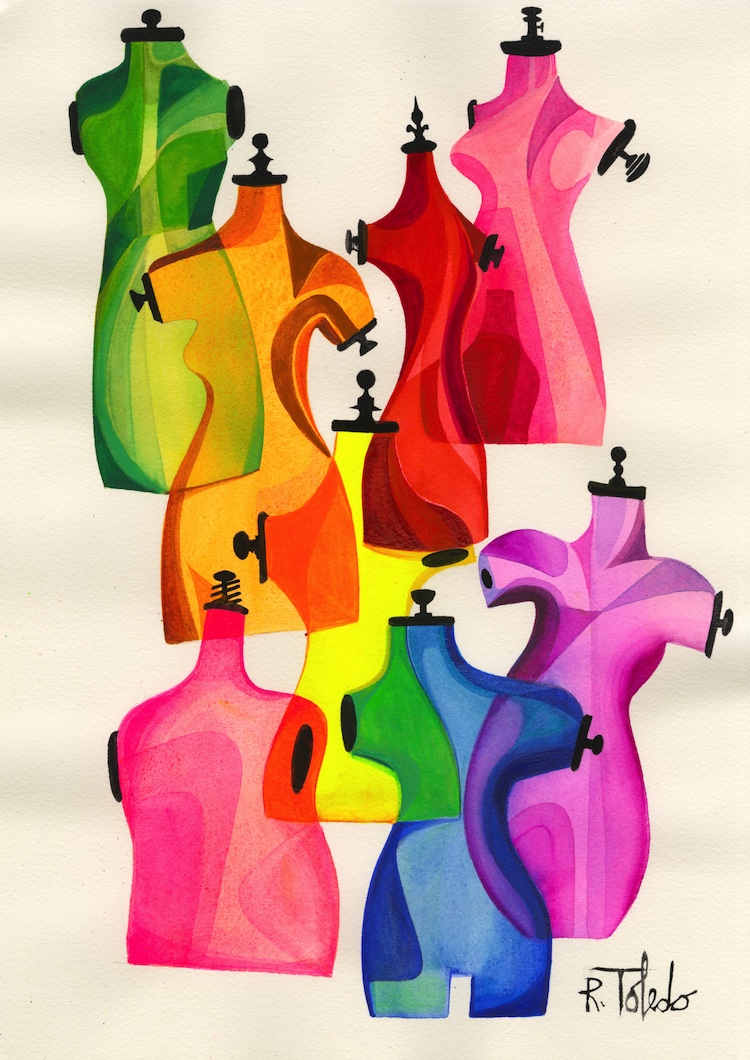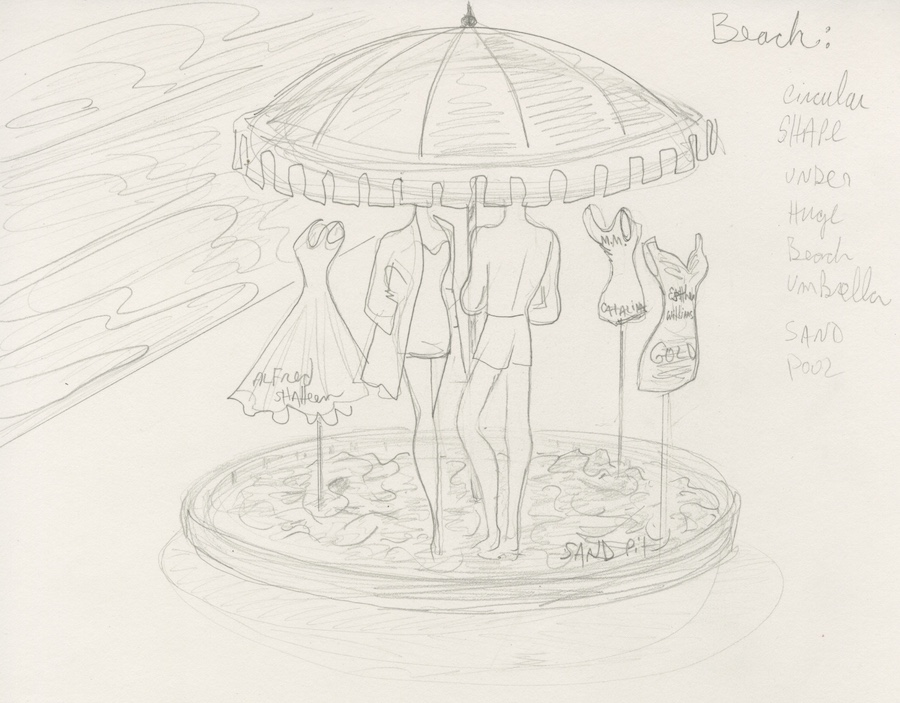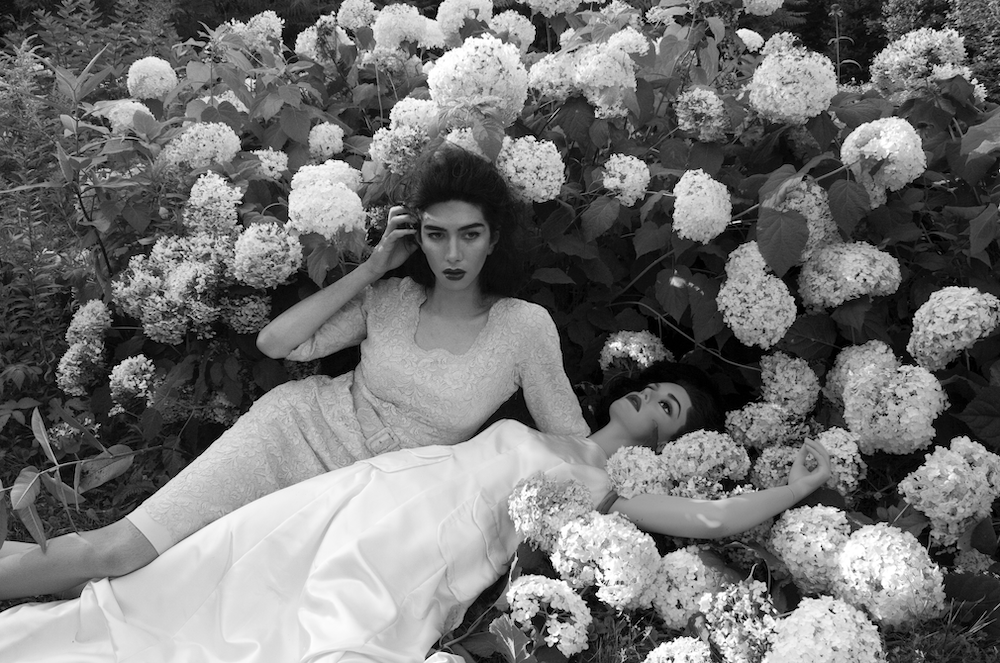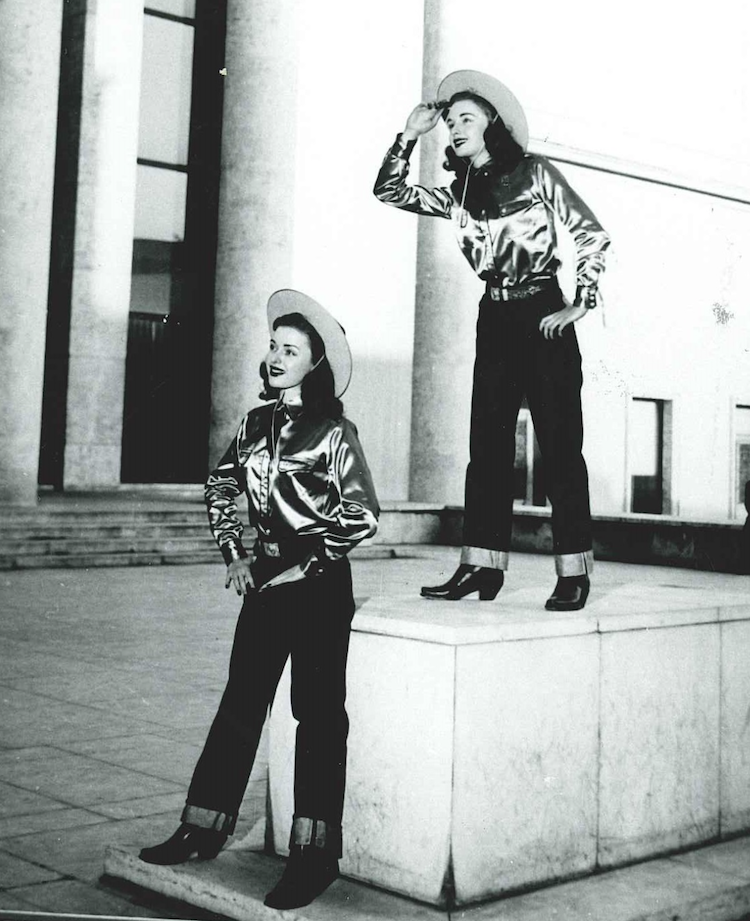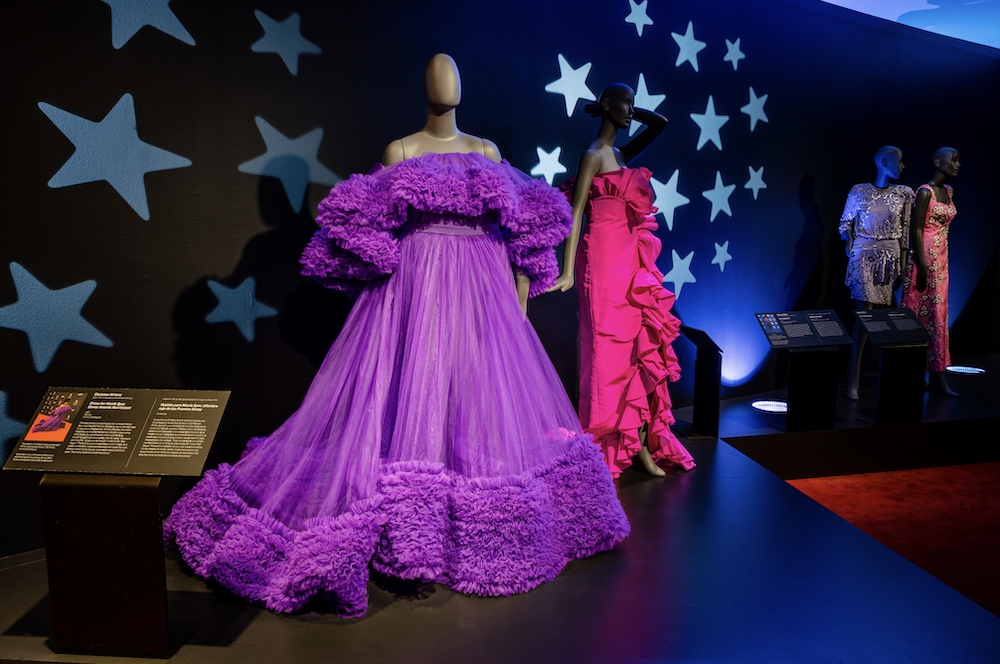If there’s an artform where we all actively participate, it’s fashion. Whether yanking up Covid sweatpants for two years or challenging a carry-on suitcase, in Fashion we adapt, function—and play. Sea to shining sea covers a lot of fertile ground for creating Grit and Glamour. Visual artist Ruben Toledo set the stage and I spoke with guest curator Michelle Finamore about the history hanging in my closet.
Gwynned Vitello: I’m overwhelmed, in a dazzling way, by the history covered in this fashion retrospective. How do you organize a show that spans so much time and geography?
Michelle Finamore: We start off with George Washington himself, since there’s a really wonderful portrait from the Crystal Bridges collection. It’s paired with a gown made by the black dressmaker Mehitabel Primus for her daughter, Rebecca.
Then we have an 1830s piece made out of factory-milled cotton. Washington was very interested in literally wearing his politics on his sleeve and insisted on homespun. He wanted to wear American-made goods, which in the 1700s was difficult, as they were importing so much. The three pieces make a good opening together. 
And Alexander Hamilton was pushing the production of textile manufacturing here.
The seeds of this industry are sown throughout the 19th and 20th centuries as America seeks to become a manufacturing powerhouse. Washington was sending some political messaging in his fashion choices, but we also tell stories we tell about designers like Primus who have not had their due for many reasons.
There’s also a corner in the introduction gallery about the beginning of the American Textile industry in all its glory in the presentation of a Nudie suit, Nudie Cohn’s ultimate creation, the rhinestone cowboy. We pair that with a piece by Austin’s Fort Lonesome, a women-owned western wear company that adds its own twist.
I think I saw one of their ensembles on Lil Nas.
Yes, he does have one of theirs and a Jerry Atwood I don’t have, but there are people carrying on that tradition. It’s challenging from a curatorial perspective to consider what is distinctly American because, of course, we are made up of immigrants, oppressed and Native peoples. How do you make decisions about what is American? Those are very blurry lines.
So, you open with Rebecca Primus and George Washington, and hopefully, pair other pieces from the Crystal Bridges collection.
I thought it would be wonderful to do the exhibition at Crystal Bridges because of the depth and richness of its holdings as an American art museum. Thinking about this show, I delved online, and looked through the galleries, seeking paintings and prints that speak to the themes.
Whenever you have a portrait, you address fashion, so it was wonderful to think of how to tease out some of this. We have a wonderful Charles Sheeler painting set in Manchester, New Hampshire, which once was once a big denim producer. And we have a pair of 1880 gold line-era Levis.
In the grid section, I address the history of denim. There are so many things, like the iconic Rosie the Riveter image from the World War II era where she’s in denim overalls. This perfectly captures the moment when women started wearing this utilitarian garb on a regular basis because they were working in factories.
I love Georgia O’Keefe quote on jeans, “I rather think they are our only national uniform.”
Yes, that’s fantastic! Nudie Cohn and Fort Lonesome are part of the introductory because I do think of that as a uniquely American innovation and this idea of carrying on these traditions. Nudie is a conduit because one of the underlying currents in the exhibition is the impact of film, TV, and other media. He was a rodeo tailor based in Hollywood, dressing country stars, including Elvis, and contributed to the rhinestone cowboy mythology. I wanted to open with a dazzler.. The suit is beautiful, and I was, like, ‘Oh, I would wear this, I would!’
Kudos to George Washington, but a Nudie suit will grab attention. And I assume you start with Grit.
I feel that when you think of American contributions to the global fashion stage it’s denim, this utilitarian textile that has global roots and becomes so tightly embedded in the culture that it becomes an American icon. In addition to the historic Levis, we have some made by Ginew, the only indigenous denim maker in America, as well as cowboy-inspired ensembles by Ralph Lauren and Anna Sui.
Moving to a different landscape, the street has hugely impacted American style.
We go from a more rural scene into the city. I have this wonderful painting by Jordan Casteel called Orlando, which is so spectacular and just pulled the gallery together. It’s huge, with this wonderful image of a shop owner in Harlem on 125th Street. It’s so colorful and …
It's the man standing among the pastel shirts? I love that painting!
It’s beautiful. I went through the space over a year ago and then, with a team, had to figure out how it all would make sense. Some look totally different when you get them in the galleries, but this was perfect! There I have a capsule of American streetwear, like a 1997 jumpsuit by Tommy Hilfiger worn by Missy Elliott. There’s a contemporary piece by Birmingham’s Olivia Anthony, a young street designer following the footsteps of April Walker.
Streetwear is not just related to the ’90s. I think the origins really started with the zoot suit, so in those places where I could not find pieces, I went to film, and in that gallery, I have a projection of Cab Calloway in suits from Stormy Weather which are fabulous. That’s interspersed with footage related to Dapper Dan, though it’s hard to find his actual pieces because of the high demand. Streetwear is everything, from sneaker culture to hoodies, sweatpant ensembles, and more, and these iconic American creations have a global impact.
Virgil Abloh’s Nebraska sweat has to be in that section.
I feel like it’s the symbol of the exhibition in many ways, as he draws from the middle of the country and that collegiate-type phase. Then Hollywood is kind of drawn in, the blending of all these different American influences.
And you have another multi-hyphenate Virgil.
From Cochiti, Pueblo, he’s just like Abloh, working in so many different media. Virgil Ortiz started as a potter and was discovered by Donna Karan twenty years ago when she saw his work in Santa Fe. He’s still involved in fashion with leather work and streetwear. The indigenous story is so important, one I’ve tried to weave into the show the best I can.
It’s the original American fashion, and I think, the most imbued with story and symbol. And moving into accessories, there are more stories.
It’s a cabinet of curiosities with pieces ranging from the 1840s to the early 2000s. There’s an early American calash bonnet that mimics the covered wagon in that it’s collapsible and serves as protection from wind, sun, and dust. There is also weather protection in the fans made by Tobias Scott, a very successful designer who bought his freedom because of his great talent for making and selling those fans.
You've got two smaller sections that proved to be big successes for American industries.
We’re moving into two sections where Americans became major exporters. For Intimates, I focused primarily on women designers because it was a space where they could succeed in business, as well as design. I have this teeny, tiny little corset, where the curator was floored by the size and its need to fit the mannequin. Compare that to one by Emily Kilbrick, an inventor in the late 19th, early 20th centuries who changed the straps and made the fabric more comfortable for a real woman, actually, a moment of dress reform. And representing the trend to body positivity, we have a Savage X Fenty ensemble.
For swimwear, I focused on mid-century pieces because that was the heyday of the Hollywood idea of California lifestyle. We have wonderful pieces by Catalina, and by Alfred Shaheen, inventor of the Hawaiian shirt, and a film projection of Esther Williams in Million Dollar Mermaid!
You do address the issue of labor and work standards, and Angela Mercado’s essay illustrates that with prints from the Crystal Bridges collection.
We have a wall devoted to the real price people pay to create these garments, as well as other historical aspects. We feature a dress by Madame Olympe Boiss from New Orleans, a French immigrant who created custom garments and actually signed her work, something very rare in the 1860s.
America excelled exporting contemporary ready-to-wear, and this section addresses things like the Ebony Fashion Fairs, which inspired a young Patrick Kelly, as well as the Battle of Versailles, where America shook up the staid fashion world (and was later restaged with Zendaya and Tommy Hilfiger).
I didn’t expect a Pop Art section, but it makes sense.
We have a fabulous Roy Lichenstein painting from the permanent collection that is pivotal, as well as a beautiful 1970s Halston with an Andy Warhol print. The Christian Francis-Roth dress looks like a dollar wrapped around the body, so this showcases how Pop Art is such a really distinctive American contribution to the art world
In Refashioning America, you focus on more contemporary designers.
Kerby Jean-Raymond of Pyer Moss comes to mind immediately, especially when thinking about how clothing can communicate contemporary issues. His is the typewriter ensemble. And of course, we have the late Patrick Kelly. Alabama Chanin, after working in New York, opened a practice in Alabama where she employs local embroiderers, quilters, and seamstresses. We also have a piece from Jamie Okuma, a Luiseno visual artist who does amazing beadwork and mixed media.
Grit to Glamour must end with a red carpet?
And we actually have one! There are pieces from the 1920s to the present, all with some Hollywood association. A funny story involves the spectacular dress Chrisitan Siriano made for Nicole Byer. Designers ship differently from art museums, so we got this small box and thought there was no way the piece could be inside. When we opened it, the gown pretty much popped out, exploding from the box—and it’s a LOT of dress!
The show looks beautiful, but you’re also telling a story about adaptation, inclusion - and appropriation. I mean, how do you assess pictures of skinny white models in feather and beaded vests, or Ralph Lauren wearing a Navajo jacket and cowboy hat?
It is very challenging, and I felt strongly that we strongly represent the indigenous pieces. People look at the various cultures as uniquely American, yet don’t credit the richness of the different tribes or the unknown Blacks who contributed to our style. You have to confront the history, you can’t whitewash it. But I think you can look at the ensembles, question the origins, and open a dialogue, and if that happens and people think more deeply about where it all comes from, then I’m doing my job as a curator.
Fashioning America: Grit to Glamour is on view at the Crystal Bridges Museum in Bentonville, Arkansas through January 30, 2023.

